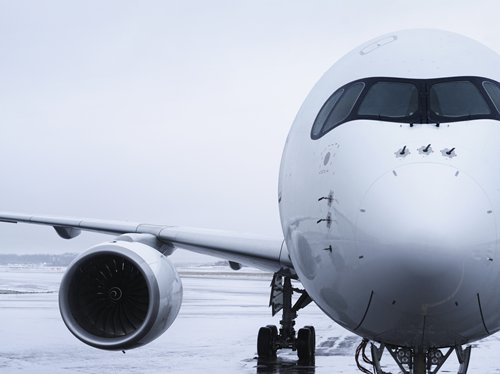
A Finnair A350 Photo: Courtesy of Finnair
When mentioning Finland, most of us would associate it with the Northern Lights - also known as Aurora Borealis - the Santa Claus Village in Lapland, or the Arctic Circle.
Now, Finland is increasingly becoming associated with visits from Chinese travelers after attracting more and more tourists in recent years.
As of June 15, Finnair passengers can now enjoy Wi-Fi connection and on board Alipay payment services, a move showing the airline's commitment to 'wowing' Chinese customers.
It is the first airline in the world to offer Alipay mobile payment on board flights to and from China.
Furthermore, Shanghai, Beijing and Hong Kong routes are operating with the newest A350 to improve customer services.
As the first Western European airline to establish a direct route to Beijing in 1988, Finnair currently has six destinations in China including Beijing, Chongqing, Hong Kong and Shanghai, as well as summer services to Xi'an and Guangzhou. In May, the company celebrated a milestone of five years of flight operation to Chongqing.
As of this summer, the airline now manages a record total of 35 weekly flights to China.
"China is a key market for Finnair, it is in our top five markets globally," Mikko Turtiainen, vice president of Finnair's global sales department, told the Global Times on Monday.
Many Chinese customers travel to onward European cities via Helsinki, but increasingly, we are seeing more and more interest in Finland as a final destination. Helsinki and Lapland have recently become more popular with our customers than the traditional city breaks in Paris and Rome, Turtiainen added.
"There is a growing trend of more Chinese customers flying to Northern Europe in recent years - it gives us big opportunities," Turtiainen said, adding that Finnair intends to double Asian traffic and to increase cargo capacity by 50 percent by 2020.
Surpassing European rivals
European carriers take a cautious attitude when opening new flight routes to certain regions, a comparison to the fast expansion of Chinese airline routes.
In 2014, there were 32 direct flights conducted by European countries from Europe to China, with only five new flight routes opening between then and 2017.
In comparison, between 2014 and 2017, the flight routes between Europe and China operated by Chinese carriers increased from 38 to 55, 23 of which belong to Air China.
Among the European carriers flying to China, some even quit the market such as British Airways, which withdrew flight routes to and from Chengdu in 2016. Lufthansa opened a route in Qingdao, but quit the Shenyang route in 2016.
Finnair, however, could be regarded as a European airline front-runner as it is among the few carriers that have been opening new flights to China in the past few years instead of canceling them.
Competition from China
Increasing routes between China and Europe is not only on the table for the European airlines, but for Chinese ones as well.
On Wednesday, HNA Group's subsidiary Lucky Air applied to the Civil Aviation Administration of China (CAAC) to open a route starting from Kunming in Southwest China's Yunnan Province to Helsinki from July next year.
On June 7, Air China opened its first direct route from Beijing to Zurich, Switzerland flying four times per week and carrying up to 227 passengers each flight.
The aviation market between China and Europe, no matter in terms of monthly flights or monthly seats, only accounted for 40 percent of the entire market 10 years ago but currently, the ratio reached to 60 percent, with all being non-stop flights, Lei Zheng, president of the Institute for Aviation Research (UK) remarked at the first IAR China-Europe Aviation Summit in Beijing on Monday.
In 2017, there are 59 direct flights conducted by Chinese carriers out of a total 76 flights between China and European countries, Lei said. There are also many second- and third-tier cities opening direct routes to Europe, including Wuhan, Shenzhen and Qingdao.
European destinations have expanded to more cities such as Prague and Manchester, a change from traditional city breaks in Paris, London and Frankfurt.
Lei attributed the expansion of routes to the rising number of Chinese travelers, which has accounted for two-thirds of the Chinese and European market, bringing further opportunities for Chinese carriers.
However, "we're working to preserve the long-term commitment to these markets by offering the shortest gateway between China and Europe and providing comfortable and convenient travel. As a result, all customers from China will encounter the unique Nordic experience," Turtiainen said.
The airline industry will continue to be challenging, with a lot of competition and pressure on ticket prices, but it is still a growth market, and with a clear strategy, you can differentiate from the competition, he said.

